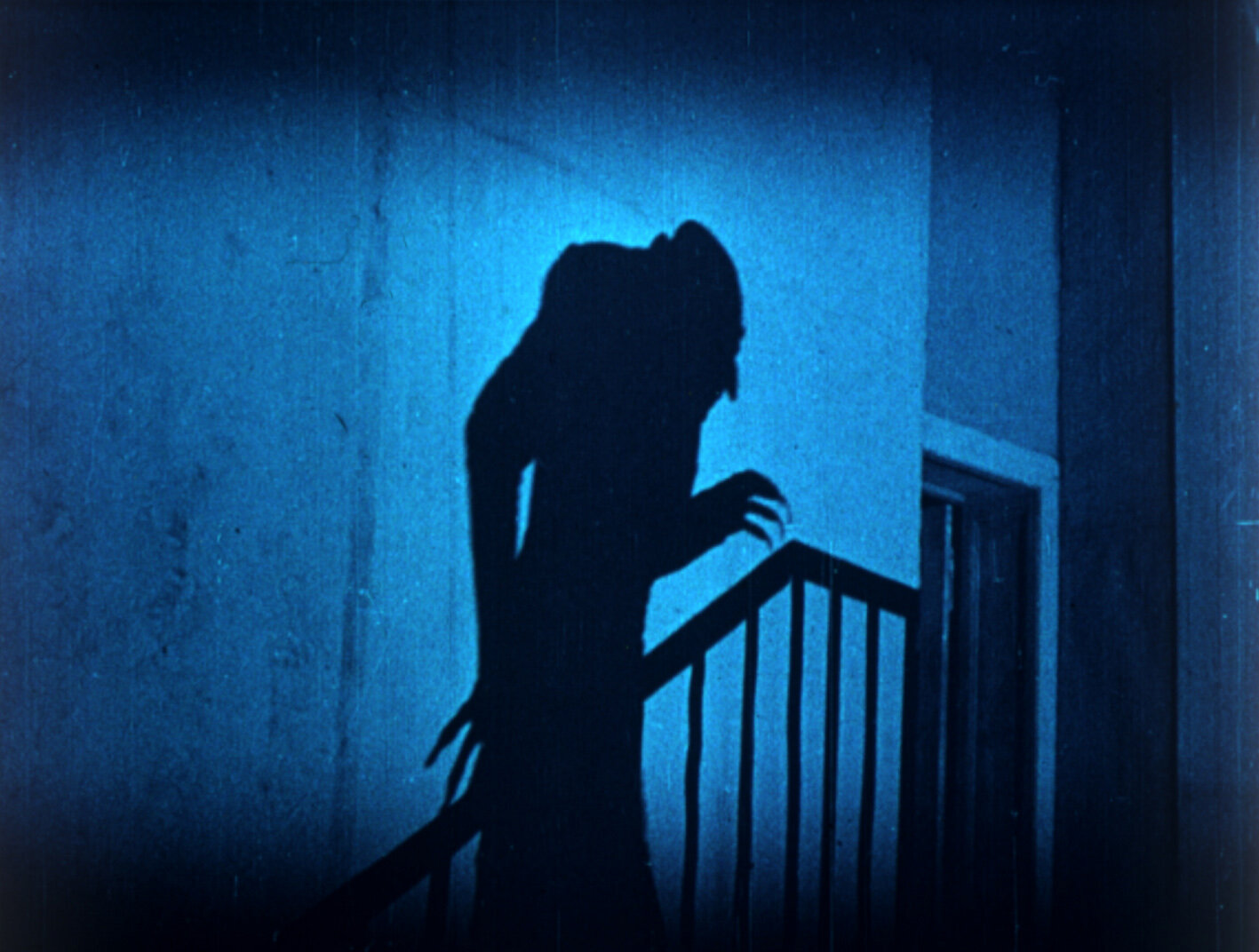This isn’t going to be anything massive. This is simply a ringing endorsement. However one can, watch the 1922 silent horror film Nosferatu. It is 100 years old and still makes an impact to this day.
Why?
Because it is the very DNA of so much of horror since and up to today. The imagery is palpable and instantly iconic, the clever alterations to the Dracula story for German audiences make it not cinema’s first rip-off but its first homage, and the direction and performances are still impeccable.
There is an element of disbelief one must suspend to watch a 100 year old movie. Some scenes will look rather odd and not exactly polished, a product of the film almost being completely destroyed and viewed today from safety nitrate film prints. The bold colour grading distinguishing day from night, orange and blue respectively, has been parodied until the effect barely registers, and the acting itself is born from melodrama theatre instead of the nuanced performance craft we are used to.
Once we move from our modern misgivings and perceptions of what cinema is today, we are unlocked to a world of eternal power. I first saw this film in 2013 on my initial quest to know what true cinema is, watching all the classics. Since then, I have never forgotten the instant terror and captivation I felt watching Max Schreck as Count Orlok stand motionless, staring into the camera as if he is reaching out and standing before you, a breakdown of the fourth wall in every way to deliver true horror. Director F.W. Murnau knew what kind of power Schreck held as his main actor, cultivating his presence like a weapon, driving the film to even more terrifying sequences as romance, mystery, and complex interrogations of science and the supernatural fill the rest of the story’s spaces.
The pacing may not be perfect, an extended chase sequence involving Orlok’s minion Knock escaping prison and being hunted by the Wisborg townspeople going on too long. We also have little connection to the love between Hutter and Ellen, the central romance, which can make their drama a little empty.



These criticisms come from someone who has seen this work a half dozen times in the last ten years, as it is one of the finest, most influential, and most effective horror films ever made. It comfortably invests itself in the dark and the forbidden, freely crafting imagery of pure nightmares, and ambitiously questions if vampirism could be genetic or explained by science. Nosferatu still means something to this day, and will do so for the next 100 years. It exists fully-formed and inspired by grief, trauma, a sense of failure, and a willingness to expose oneself. It is built of ancient fears and modern solutions, of thought and manifestation. It is one of the greatest films of all time and I love it endlessly. Seek out Nosferatu however you can, and you will not be disappointed.



